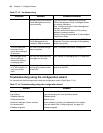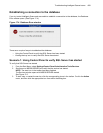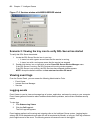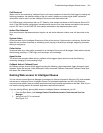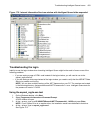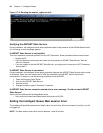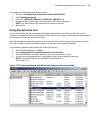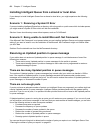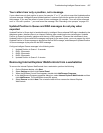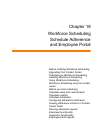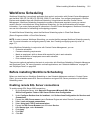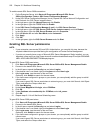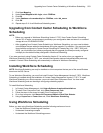496 Chapter 17 Intelligent Queue
Installing Intelligent Queue from a shared or local drive
If you attempt to install Intelligent Queue from a shared or local drive, you might experience the following
issues.
Scenario 1: Receiving a System IO Error
If you are installing Intelligent Queue from a directory with a long path or a path name which includes spaces,
you might receive a System IO Error which will halt the installation.
Solution: Use a short directory name without spaces, such as C:\6160Install.
Scenario 2: Being unable to install Microsoft .Net Framework
If the Microsoft .Net Framework is not present when you are installing Intelligent Queue and a popup appears
asking if you want to install it now, the installation of the Microsoft .Net Framework might not initialize when
you click Yes.
Solution: Run the dotnetfx.exe from the NetFramework directory.
Receiving an Updated position in queue message
If your caller does not receive an Updated position in queue message, it could be because of one of the
following two reasons:
• There are too many Updated position in queue messages for the switch to process.
• There are not enough ports to provide a message to each caller who is programmed to receive a
Updated message in queue.
There are too many Updated position in queue messages
The number of Updated position in queue messages (tap internal calls) your switch can handle is 1500 or
less. If the number of Updated position in queue messages exceeds the recommended number, some
messages will be delayed or might not play at all. You will need to reduce the number of Updated position in
queue messages, or increase the number of ports.
There are not enough ports
If you do not have an adequate number of ports to run Intelligent Queue, as programed, your callers might not
receive Updated position in queue messages. Intelligent Queue provides queues with the greatest priority
ports first. If you run out of ports, it is queues with lower priorities that would not receive the Updated position
in queue messages.
If Updated position in queue is running low on ports you will receive an error message. If you run out of ports
you will receive a critical error message. In the event that you receive either of these messages, you can take
one of the following actions to make more ports available:
• Purchase more ports as required.
• Decrease the frequency of queue updates.
• Decrease the number of users updated in the queue.
• Reduce the number of queues being monitored.
• Reduce the number of Updated position in queue messages.
• Reassign ports to Updated position in queue.
You can use the port sizing tool to determine the number of ports you require to run Intelligent Queue. See
“Planning the number of ports you require” on page 421.



